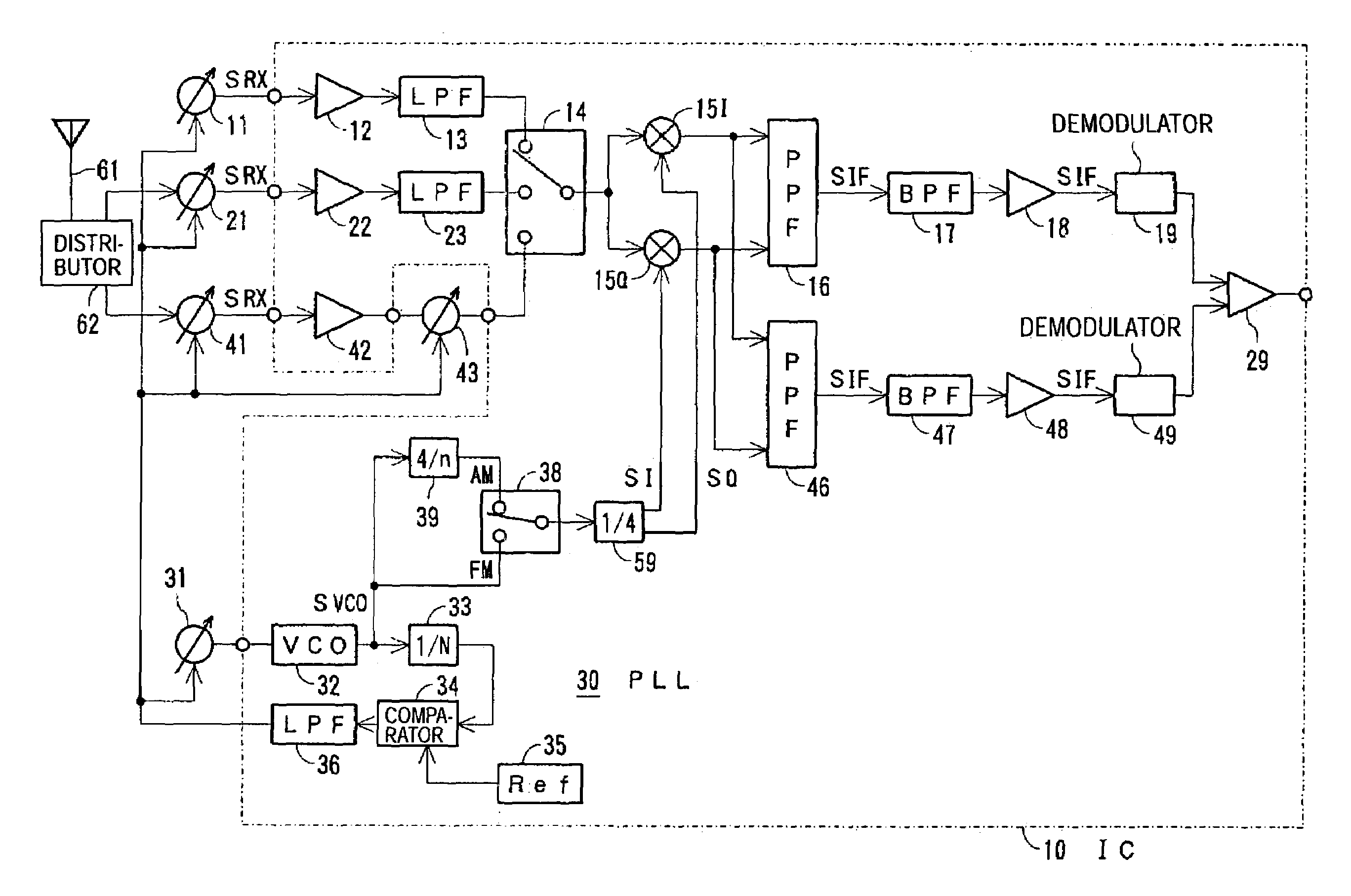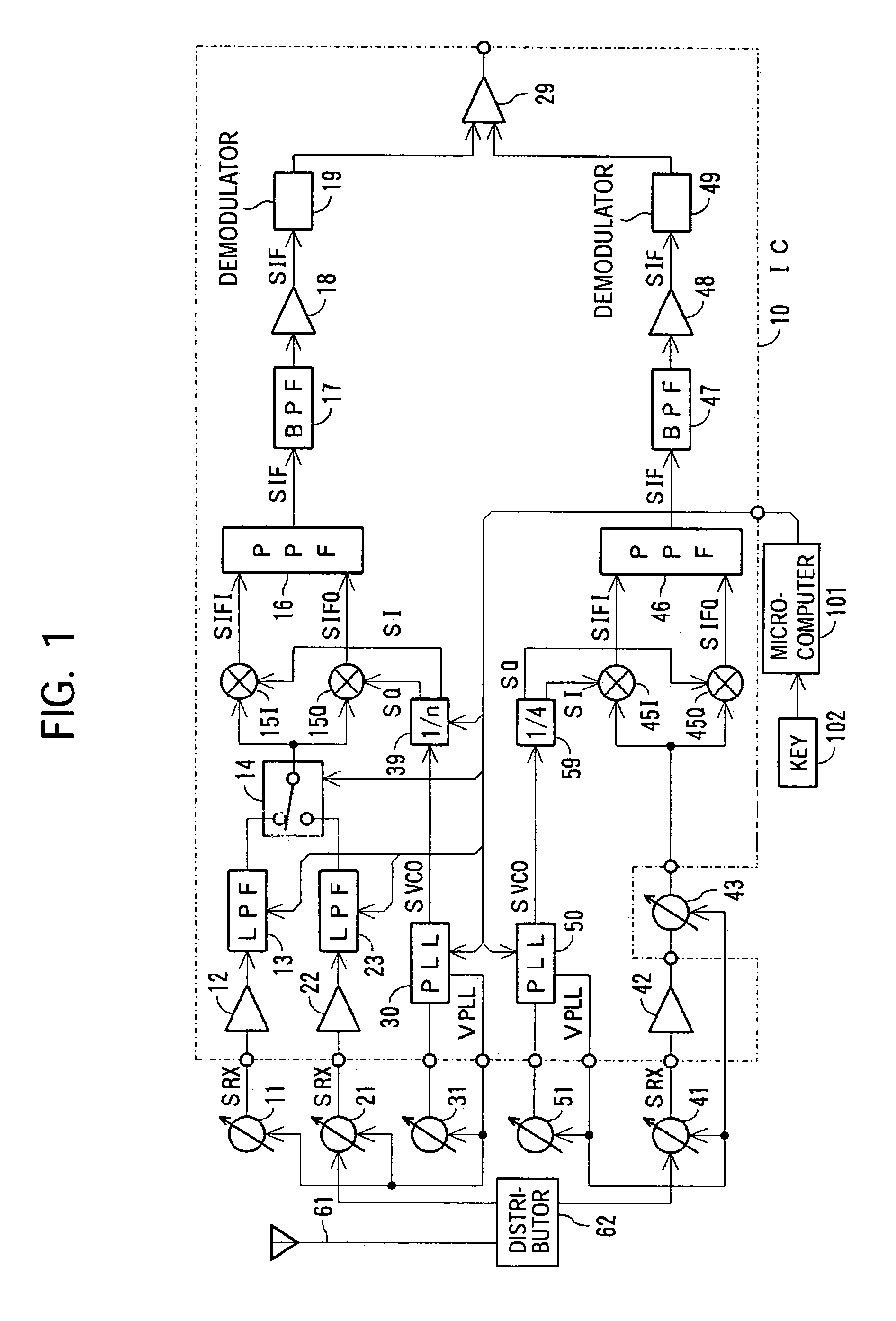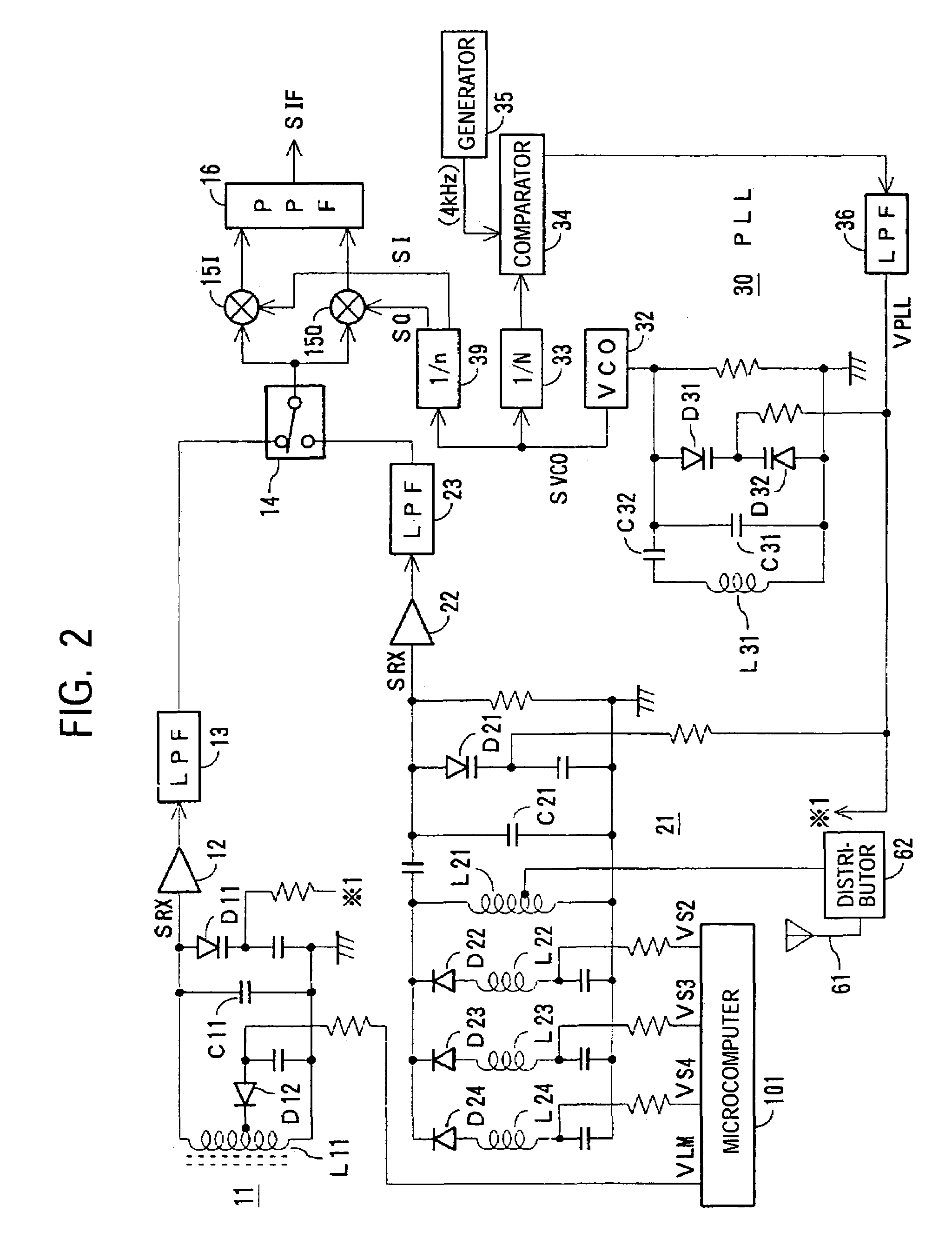Antenna tuned circuit for a superheterodyne receiver
a receiver and tuned circuit technology, applied in the field of receivers and ics, can solve the problems of reducing reception sensitivity, difficult to improve characteristic, and unsatisfactory interference characteristics
- Summary
- Abstract
- Description
- Claims
- Application Information
AI Technical Summary
Benefits of technology
Problems solved by technology
Method used
Image
Examples
Embodiment Construction
[0042]① First-Receiver
[0043]1. Configuration and Operation of the Receiver
[0044]FIG. 1 shows an example in which the present invention is applied to a multi-band receiver for receiving long-, medium-, and short-wave band signals, and an FM broadcast band signal. In this example, the short-wave band is divided into four frequency sub-bands. In this example, the range and frequency step of the reception frequency bands at the long-, medium-, and short-wave bands and the FM broadcast band are shown in FIG. 3.
[0045]Although the relationship between the reception frequency and the local oscillation frequency, etc., is summarized later, the intermediate frequency for reception of long-, medium-, and short-wave band signals is 55 kHz, and the intermediate frequency for reception of FM broadcast band signals is 200 kHz.
[0046]In FIG. 1, a section 10 surrounded by a chained line indicates a monolithic IC of one chip. A microcomputer 101 serving as a system control circuit is connected to the ...
PUM
 Login to View More
Login to View More Abstract
Description
Claims
Application Information
 Login to View More
Login to View More - R&D
- Intellectual Property
- Life Sciences
- Materials
- Tech Scout
- Unparalleled Data Quality
- Higher Quality Content
- 60% Fewer Hallucinations
Browse by: Latest US Patents, China's latest patents, Technical Efficacy Thesaurus, Application Domain, Technology Topic, Popular Technical Reports.
© 2025 PatSnap. All rights reserved.Legal|Privacy policy|Modern Slavery Act Transparency Statement|Sitemap|About US| Contact US: help@patsnap.com



